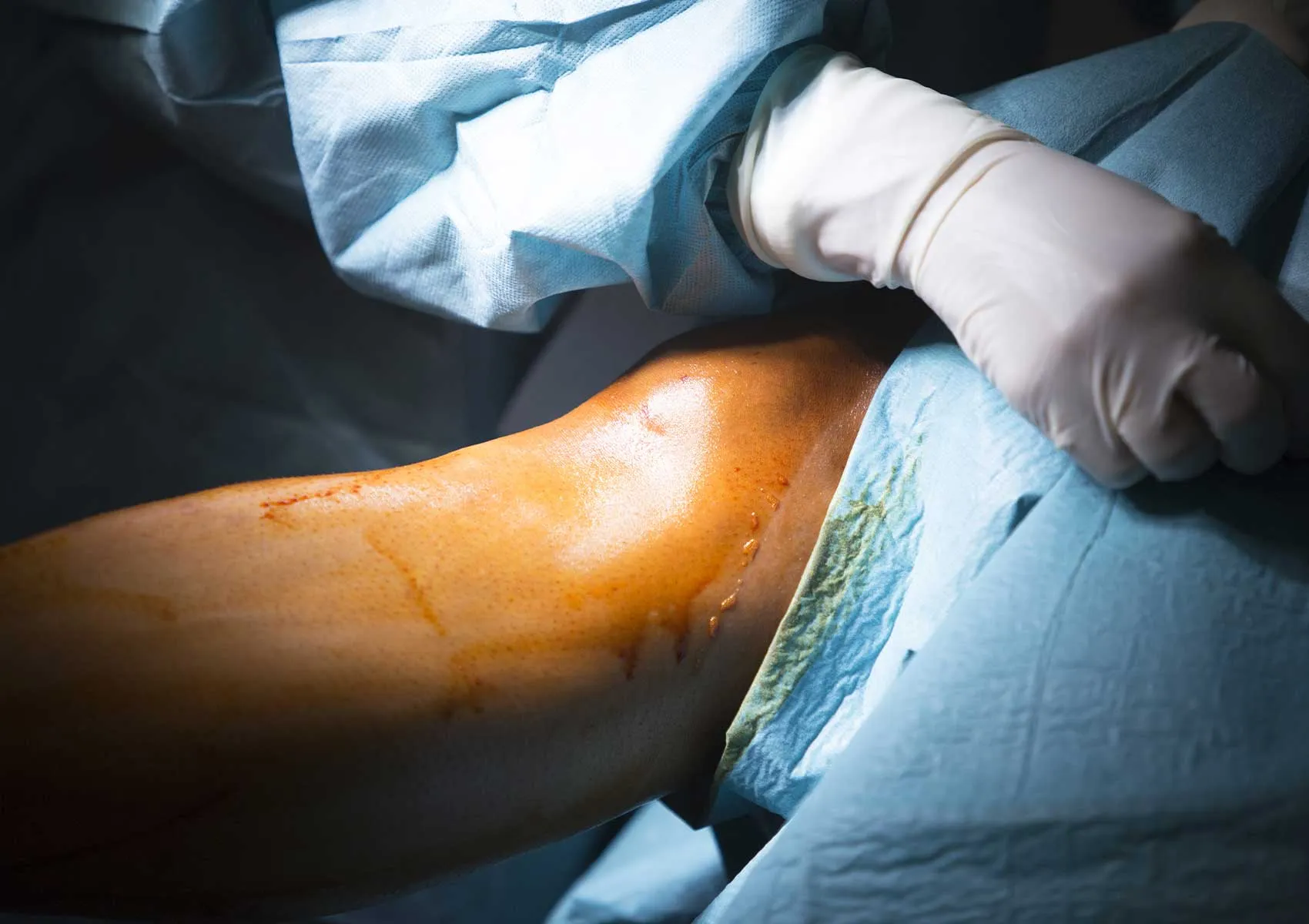Arthroscopic Knee Surgery or Open Surgery?
Arthroscopic surgery and open surgery are primary treatment methods for knee disorders. This article explores in detail the advantages, disadvantages, and indications of knee arthroscopy and open surgery.
The knee joint is one of the most complex and frequently used joints in the body. Various conditions such as sports injuries, osteoarthritis, meniscus tears, and anterior cruciate ligament (ACL) injuries can affect the knee joint. Surgical interventions play a significant role in the treatment of these issues. The two main surgical methods used in knee surgery are knee arthroscopy and open surgery. The choice between these methods depends on the patient's symptoms, the type of damage, and the surgeon's recommendations. In this article, we will discuss knee arthroscopy and open surgery methods in detail.
What is Knee Arthroscopy?
Knee arthroscopy is a minimally invasive surgical technique in which the knee joint is examined and treated through small incisions using a special camera and thin surgical instruments. It is commonly performed for meniscus tears, ACL injuries, and cartilage damages. Arthroscopic surgery facilitates faster recovery for patients.
Advantages of Arthroscopy
One of the main advantages of arthroscopic surgery is its minimally invasive nature. This means limited tissue damage, less bleeding, and a shorter operation time. Post-operative pain is usually milder, infection risk is lower, and patients often return to daily activities earlier. Arthroscopy allows detailed visualization of the knee joint, enabling simultaneous diagnosis and treatment.
Disadvantages of Arthroscopy
Although arthroscopy provides good results in many cases, it may not be sufficient in certain conditions. It is not applicable for advanced joint damage, complex fractures, or cases requiring prosthetic surgery. Arthroscopy may fall short when addressing problems needing a wider surgical field.
What is Open Surgery?
Open surgery is a surgical technique that involves a larger incision to directly access the knee joint. This method is used in a wide range of procedures, from meniscus repairs to knee prosthesis surgeries. It is preferred in larger, complex, and advanced cases.
Advantages of Open Surgery
Open surgery is suitable for extensive surgical interventions. It provides broad access in procedures such as knee replacement or serious cartilage and bone damage. It also offers more definitive and controlled results in certain ligament repairs and fracture treatments.
Disadvantages of Open Surgery
Operations performed through open surgery may cause more tissue damage due to larger incisions. This can result in increased post-operative pain, a higher risk of infection, and longer recovery periods. Patients may experience a longer rehabilitation process before returning to daily activities and sports compared to arthroscopy.
When is Each Method Preferred?
Knee arthroscopy is generally the first choice for meniscus tears and small cartilage injuries. These injuries can be treated quickly and effectively with arthroscopic surgery. Arthroscopic techniques are the standard for ACL reconstruction and have been successfully applied.
However, open surgery is preferred in advanced osteoarthritis cases, joint deformities, or when knee prosthesis is required. Open surgery is also the better option for complex fractures, intra-articular tumors, or significant soft tissue problems.
Post-Operative Recovery Process
Patients who undergo arthroscopic surgery are often discharged the same day or stay briefly in the hospital. Early-stage gentle exercises and physiotherapy help increase mobility. Pain and swelling are generally controlled quickly.
Open surgery involves a longer hospital stay. The recovery process is slower because the surgical wound is larger and tissue healing takes more time. Physiotherapy starts more gradually, and patients may need to participate in intensive rehabilitation programs.
Complications and Risks After Surgery
Both surgical methods carry risks such as infection, bleeding, and vascular or nerve injuries. However, infections and wound complications may be more common with open surgery. Small tissue damages and anesthesia risks, which are rarely seen in arthroscopy, can be minimized with the surgeon’s experience.
Choosing the appropriate surgical method should be tailored to each patient, considering their age, activity level, duration, and severity of the disease. This decision should be made by an experienced orthopedic surgeon.
Future Approaches in Knee Surgery
With technological advancements, devices used in knee arthroscopy are becoming smaller, enhancing surgical precision. Robotic surgery and advanced imaging techniques are improving outcomes in both arthroscopic and open surgeries. Many innovations, particularly in cartilage regeneration and biological treatments, have started to be applied.
Multidisciplinary approaches that prioritize patient expectations and quality of life are becoming increasingly common in knee surgery. The goal is to achieve optimum functional and aesthetic outcomes.
FAQ
-
When is knee arthroscopy recommended?
Arthroscopy is recommended for meniscus tears, ACL injuries, small cartilage damages, and intra-articular diagnostic procedures.
-
When should open surgery be preferred?
Open surgery is preferred in advanced osteoarthritis requiring knee replacement, large fractures, joint deformities, or complex ligament repairs.
-
What are the advantages of arthroscopic surgery?
Its minimally invasive nature, shorter recovery time, less pain, lower infection risk, and early mobility are the main advantages of arthroscopy.
-
What are the differences in recovery times after surgery?
Recovery is generally faster with arthroscopic surgery, allowing patients to return to daily activities sooner, while open surgery requires a longer healing period and more comprehensive physical therapy.
-
Can both methods be used for every knee disorder?
No, the choice of surgical method depends on the patient's condition and severity of injury. Arthroscopy may be insufficient in some cases, while open surgery is necessary in others. This decision must be made by a specialist surgeon.

